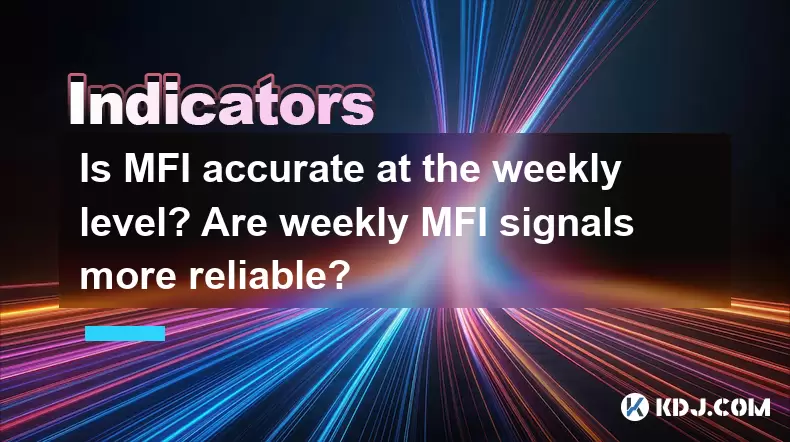-
 Bitcoin
Bitcoin $117900
-2.85% -
 Ethereum
Ethereum $4559
-2.84% -
 XRP
XRP $3.068
-5.67% -
 Tether USDt
Tether USDt $1.000
0.02% -
 BNB
BNB $836.7
-0.81% -
 Solana
Solana $193.2
-2.38% -
 USDC
USDC $0.9998
0.00% -
 TRON
TRON $0.3591
-0.32% -
 Dogecoin
Dogecoin $0.2238
-7.20% -
 Cardano
Cardano $0.9090
4.71% -
 Chainlink
Chainlink $22.55
-4.36% -
 Hyperliquid
Hyperliquid $44.78
-2.41% -
 Sui
Sui $3.771
-4.47% -
 Stellar
Stellar $0.4199
-6.18% -
 Bitcoin Cash
Bitcoin Cash $587.8
-5.02% -
 Ethena USDe
Ethena USDe $1.001
-0.01% -
 Hedera
Hedera $0.2493
-5.06% -
 Avalanche
Avalanche $23.66
-5.54% -
 Litecoin
Litecoin $121.0
-6.80% -
 Toncoin
Toncoin $3.383
-2.39% -
 UNUS SED LEO
UNUS SED LEO $9.287
0.47% -
 Shiba Inu
Shiba Inu $0.00001286
-6.48% -
 Uniswap
Uniswap $10.94
-9.06% -
 Polkadot
Polkadot $3.979
-5.53% -
 OKB
OKB $96.24
-3.88% -
 Dai
Dai $0.9997
0.00% -
 Bitget Token
Bitget Token $4.570
-4.16% -
 Cronos
Cronos $0.1510
-8.87% -
 Ethena
Ethena $0.7251
-6.96% -
 Aave
Aave $310.8
-4.73%
Is MFI accurate at the weekly level? Are weekly MFI signals more reliable?
Weekly MFI signals may be more reliable than daily ones, as they filter out short-term noise and capture broader market trends in crypto trading.
May 22, 2025 at 04:43 pm

The Money Flow Index (MFI) is a popular technical indicator used by traders to assess the strength of money flowing in and out of a security. While MFI is commonly applied on daily charts, its accuracy and reliability at the weekly level are subjects of interest for many crypto traders. In this article, we will delve into the effectiveness of MFI at the weekly level and explore whether weekly MFI signals are more reliable.
Understanding the Money Flow Index (MFI)
The Money Flow Index (MFI) is an oscillator that ranges from 0 to 100. It is designed to measure buying and selling pressure over a set period. The MFI takes into account both price and volume to provide a more comprehensive view of market dynamics. The formula for MFI involves calculating the Positive Money Flow and Negative Money Flow over a specified period, typically 14 days, and then using these values to determine the MFI value.
MFI readings above 80 are generally considered overbought, indicating that the asset may be due for a price correction. Conversely, readings below 20 are seen as oversold, suggesting a potential price rebound. Traders use these thresholds to make buy and sell decisions.
MFI at the Weekly Level
When applying the MFI to weekly charts, the indicator's sensitivity to price changes is reduced compared to daily charts. This can result in fewer false signals and potentially more reliable trading opportunities. Weekly MFI readings are calculated using the same formula as daily MFI, but the data points are weekly highs, lows, and volumes instead of daily ones.
The longer time frame of weekly charts allows traders to capture broader market trends and filter out the noise typically seen in daily price movements. This can be particularly useful in the volatile cryptocurrency market, where daily fluctuations can be significant.
Accuracy of Weekly MFI
The accuracy of weekly MFI depends on several factors, including the asset's volatility, market conditions, and the trader's strategy. In general, weekly MFI can be more accurate than daily MFI because it smooths out short-term price fluctuations and focuses on longer-term trends.
For example, if a cryptocurrency has been in an uptrend for several weeks and the weekly MFI reaches overbought levels, this could be a stronger signal of a potential reversal than a similar reading on a daily chart. The reason is that the weekly MFI is less likely to be influenced by short-term market noise.
Reliability of Weekly MFI Signals
The reliability of weekly MFI signals can be assessed by examining historical data and backtesting trading strategies. Many traders find that weekly MFI signals are more reliable because they are less prone to whipsaws and false breakouts.
One way to enhance the reliability of weekly MFI signals is to use them in conjunction with other technical indicators, such as moving averages or trend lines. For instance, if the weekly MFI indicates an overbought condition and the price is also approaching a significant resistance level, the signal's reliability increases.
Case Studies: Weekly MFI in Action
To illustrate the effectiveness of weekly MFI, let's look at a few case studies from the cryptocurrency market.
Bitcoin (BTC): In early 2021, Bitcoin's weekly MFI reached overbought levels above 80, signaling a potential price correction. Shortly after, Bitcoin experienced a significant pullback, validating the weekly MFI signal.
Ethereum (ETH): During the summer of 2020, Ethereum's weekly MFI dipped below 20, indicating an oversold condition. This was followed by a strong upward move in ETH's price, confirming the reliability of the weekly MFI signal.
Litecoin (LTC): In late 2019, Litecoin's weekly MFI hovered around overbought levels for several weeks before a sharp decline in price. This case demonstrates how weekly MFI can provide early warnings of potential reversals.
Practical Application of Weekly MFI
Traders can apply weekly MFI in various ways to enhance their trading strategies. Here are some practical steps to incorporate weekly MFI into your trading routine:
Monitor Weekly MFI Levels: Regularly check the weekly MFI of your chosen cryptocurrencies. Look for readings above 80 or below 20, which indicate overbought or oversold conditions, respectively.
Confirm with Other Indicators: Use other technical indicators to confirm weekly MFI signals. For example, if the weekly MFI is overbought and the price is approaching a key resistance level, consider it a stronger sell signal.
Set Up Alerts: Many trading platforms allow you to set up alerts for specific indicator levels. Set alerts for when the weekly MFI reaches overbought or oversold levels to stay informed of potential trading opportunities.
Backtest Your Strategy: Before applying weekly MFI signals in live trading, backtest your strategy using historical data. This will help you understand the indicator's performance and refine your approach.
Combine with Fundamental Analysis: While technical indicators like MFI are useful, combining them with fundamental analysis can provide a more holistic view of the market. For example, if a cryptocurrency's weekly MFI is oversold and there are positive developments in its ecosystem, this could be a strong buy signal.
Limitations of Weekly MFI
While weekly MFI can be a valuable tool, it is not without its limitations. Weekly MFI may not capture short-term price movements effectively, which can be a disadvantage in fast-moving markets. Additionally, like all technical indicators, MFI is not foolproof and can generate false signals.
It is crucial for traders to understand that no single indicator should be used in isolation. Combining weekly MFI with other analysis techniques can help mitigate its limitations and improve overall trading performance.
Frequently Asked Questions
Q: Can weekly MFI be used for all cryptocurrencies?
A: While weekly MFI can be applied to any cryptocurrency, its effectiveness may vary depending on the asset's liquidity and volatility. More liquid and less volatile cryptocurrencies tend to produce more reliable MFI signals.
Q: How often should I check the weekly MFI?
A: It is advisable to check the weekly MFI at the end of each week, typically on Friday or Saturday, to assess the latest market conditions and adjust your trading strategy accordingly.
Q: Is it possible to use weekly MFI for long-term investment decisions?
A: While weekly MFI is primarily used for shorter-term trading, it can also be useful for long-term investors. By monitoring weekly MFI, long-term investors can identify potential entry and exit points based on overbought and oversold conditions.
Q: Can I combine weekly MFI with other time frames for better results?
A: Yes, combining weekly MFI with other time frames, such as daily or monthly charts, can provide a more comprehensive view of market trends. For example, if both the weekly and daily MFI indicate overbought conditions, the signal's strength increases.
Disclaimer:info@kdj.com
The information provided is not trading advice. kdj.com does not assume any responsibility for any investments made based on the information provided in this article. Cryptocurrencies are highly volatile and it is highly recommended that you invest with caution after thorough research!
If you believe that the content used on this website infringes your copyright, please contact us immediately (info@kdj.com) and we will delete it promptly.
- Kazakhstan's Crypto Leap: Bitcoin ETF and Central Asia's Digital Finance Future
- 2025-08-13 12:45:19
- BlockDAG Presale Blazes Past $371M: Fundraising Frenzy Fuels Crypto Sensation
- 2025-08-13 13:05:21
- Meme Coins: Chasing the 2025 Surge – Which Will Moonshot?
- 2025-08-13 10:25:23
- Bitcoin's Wild Ride: Rally, Pullback, and What's Next
- 2025-08-13 10:25:23
- Bitcoin, Bitmax, and Institutional Demand: A New Era of Crypto Investment
- 2025-08-13 10:45:12
- Solana, ROAM, and Airdrops: What's the Buzz in 2025?
- 2025-08-13 11:35:13
Related knowledge

What does it mean when the +DI and -DI cross frequently in the DMI indicator but the ADX is flattening?
Aug 11,2025 at 03:15am
Understanding the DMI Indicator ComponentsThe Directional Movement Index (DMI) is a technical analysis tool composed of three lines: the +DI (Positive...

What does the sudden appearance of a "dark cloud cover" candlestick pattern during an uptrend indicate?
Aug 13,2025 at 11:35am
Understanding the 'Dark Cloud Cover' Candlestick PatternThe dark cloud cover is a bearish reversal pattern in technical analysis that typically appear...

What does it mean when the moving average, MACD, and RSI all send buy signals simultaneously?
Aug 11,2025 at 01:42pm
Understanding the Convergence of Technical IndicatorsWhen the moving average, MACD, and RSI all generate buy signals at the same time, traders interpr...

What does it mean when both the KDJ indicator and the RSI show overbought signals simultaneously?
Aug 13,2025 at 11:35am
Understanding the KDJ Indicator in Cryptocurrency TradingThe KDJ indicator is a momentum oscillator derived from the Stochastic Oscillator, widely use...

What does it mean when the price is trading above the SAR indicator but the red dots are densely packed?
Aug 09,2025 at 11:49pm
Understanding the SAR Indicator and Its Visual SignalsThe SAR (Parabolic Stop and Reverse) indicator is a technical analysis tool used primarily to de...

What does it mean when the candlestick chart forms a "Morning Star" but trading volume is sluggish?
Aug 12,2025 at 06:28pm
Understanding the Morning Star Candlestick PatternThe Morning Star is a three-candle bullish reversal pattern commonly observed in cryptocurrency pric...

What does it mean when the +DI and -DI cross frequently in the DMI indicator but the ADX is flattening?
Aug 11,2025 at 03:15am
Understanding the DMI Indicator ComponentsThe Directional Movement Index (DMI) is a technical analysis tool composed of three lines: the +DI (Positive...

What does the sudden appearance of a "dark cloud cover" candlestick pattern during an uptrend indicate?
Aug 13,2025 at 11:35am
Understanding the 'Dark Cloud Cover' Candlestick PatternThe dark cloud cover is a bearish reversal pattern in technical analysis that typically appear...

What does it mean when the moving average, MACD, and RSI all send buy signals simultaneously?
Aug 11,2025 at 01:42pm
Understanding the Convergence of Technical IndicatorsWhen the moving average, MACD, and RSI all generate buy signals at the same time, traders interpr...

What does it mean when both the KDJ indicator and the RSI show overbought signals simultaneously?
Aug 13,2025 at 11:35am
Understanding the KDJ Indicator in Cryptocurrency TradingThe KDJ indicator is a momentum oscillator derived from the Stochastic Oscillator, widely use...

What does it mean when the price is trading above the SAR indicator but the red dots are densely packed?
Aug 09,2025 at 11:49pm
Understanding the SAR Indicator and Its Visual SignalsThe SAR (Parabolic Stop and Reverse) indicator is a technical analysis tool used primarily to de...

What does it mean when the candlestick chart forms a "Morning Star" but trading volume is sluggish?
Aug 12,2025 at 06:28pm
Understanding the Morning Star Candlestick PatternThe Morning Star is a three-candle bullish reversal pattern commonly observed in cryptocurrency pric...
See all articles

























































































